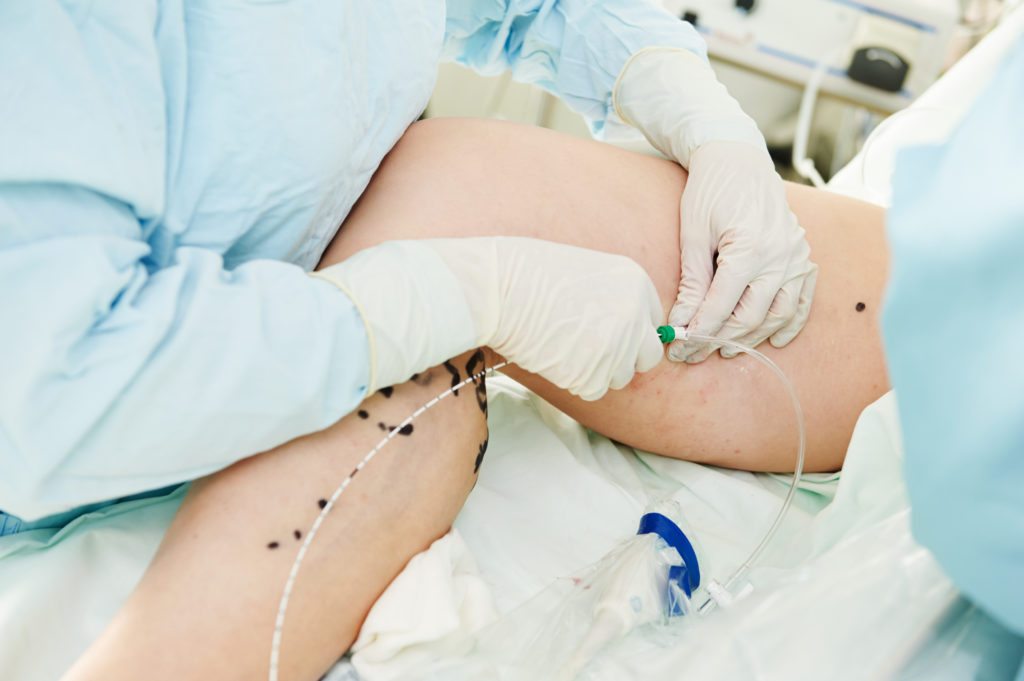
Venous Reflux and Resulting Varicose Veins Explained
Venous reflux refers to non-functional veins (such as varicose veins) which are the result of the leaking of blood backward into an otherwise healthy vein. If the one-way valves that promote the forward flow of blood are stretched or damaged, lumpy veins appear when the high pressure of pumping blood pushes the vein wall outward, since that blood has nowhere else to flow. Varicose veins are the ultimate example of venous insufficiency, and if we remove these veins, then blood can flow through healthier veins the way it’s designed. Venous reflux occurs mostly in the lower half of the body, because pressure is typically highest in the legs, and most people see these veins appear at the back of the knee, around the calf, or further upward in the thighs.
Symptoms of Venous Insufficiency:
- Tightness in the legs
- Itching or burning at the ankles
- Discoloration of the skin
- Possible skin ulcers
- Pain when walking for long periods of time
- Heaviness of the legs at the end of the day
Restore Function by Removing Insufficient Veins
Vein Treatments
Varicose veins caused by refluxed valves in the upper portion of the body are often composed of veins smaller in diameter, and are less common than those found in the lower trunk. Addressing varicose veins can be done through sclerotherapy, which is a form of injection that closes smaller varicose veins using a sclerosant (detergent). This method can minimize the pain or discomfort patients experience from incompetent veins. Varicose veins in the lower portion of the body previously required an ambulatory phlebectomy (commonly referred to as vein stripping) that was invasive, painful, and required months to recover.
Endovenous RF Ablation Therapy
The concerns about surgical phlebectomy and a desire to improve these vein removal procedures has led to developments that yield long-lasting results, are more tolerable for patients, and require minimal recovery. Radiofrequency (RF) vein treatments have changed the industry by offering nearly pain-free vein removal that is safe and effectively eliminates the vein. Endovenous RF ablation therapy is one of these, and is a treatment we offer at Midcoast Cardiovascular to treat stubborn varicose veins. This procedure is minimally invasive and focuses on larger or lengthy varicose veins – mainly the saphenous vein – by getting to the core of the issue and removing the diseased vein from the venous circuit to restore normal venous return blood flow through the limbs. The laser energy used in the past penetrated further than was needed and caused excessive bruising and pain, so radiofrequency has been found to output the ideal energy needed to treat only the interior of the vein’s lumen, penetrating no deeper.
How does Dr. Ginkel perform Endovenous Radiofrequency Ablation?
Before your vein treatment, Dr. Ginkel will perform a venous mapping ultrasound on the varicose vein. He then inserts a catheter containing a thin radiofrequency wire into the saphenous vein, usually slightly above or below the knee. Once the radiofrequency catheter is in the vein where the problem begins, energy is applied to the walls of the vein, and the catheter is pulled back to the access point.
As Dr. Ginkel withdraws the radiofrequency catheter, the problem vein closes, and blood flow is cut off from that vein. There are no stitches needed once the catheter and wire are removed, but a compression bandage will be applied and should be worn for 48 hours. Compression stockings are prescribed for patients after the treatment, and you are encouraged to walk in order to help restore healthy blood flow to alternative veins.
Call Midcoast Cardiovascular at 805-354-0112 to treat your varicose veins with Endovenous RF Ablation .
Recent Comments